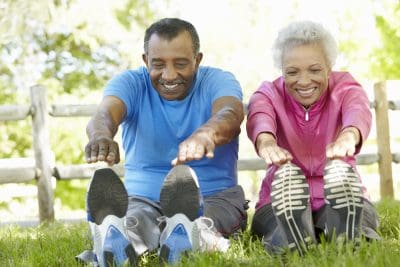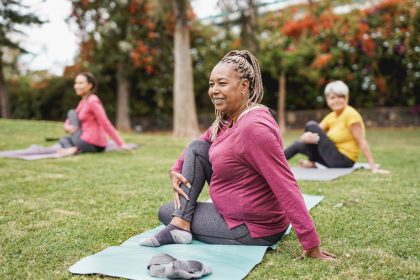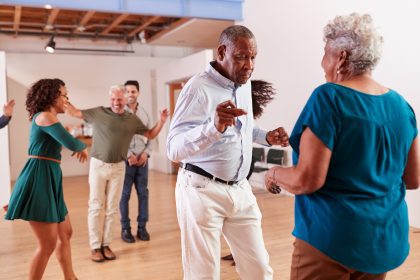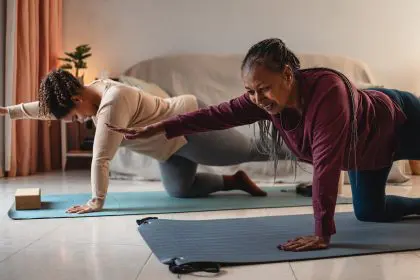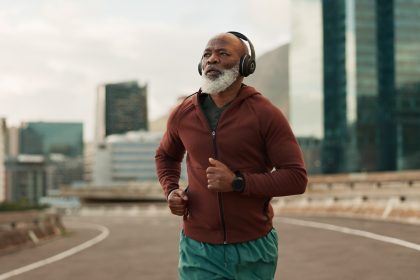A remarkable discovery is transforming our understanding of exercise and brain health in older adults. As little as five minutes of moderate-to-vigorous physical activity daily can significantly enhance cognitive function in people over 65.
This finding brings hope to millions concerned about maintaining mental sharpness as they age. The revelation that such minimal activity requirements can yield measurable brain benefits makes improved cognitive health accessible to nearly everyone, regardless of fitness level, time constraints, or physical limitations.
This approach holds particular significance for communities experiencing health disparities, including African Americans, who face higher rates of cognitive decline and dementia due to various socioeconomic and healthcare access factors.
What happens to the brain during these mini-workouts
The brain benefits from even brief exercise in multiple ways. Physical activity increases blood flow to the brain, delivering vital oxygen and nutrients while removing waste products. This improved circulation appears particularly important for the prefrontal cortex and hippocampus—areas critical for memory, planning, and decision-making that often show age-related decline.
Exercise also stimulates the production of brain-derived neurotrophic factor (BDNF), a protein that functions like fertilizer for brain cells. BDNF enhances connections between neurons and supports the formation of new cells, providing a biological mechanism explaining how just five minutes of movement can yield noticeable cognitive improvements.
The intensity of the activity matters more than duration. Moderate-to-vigorous exercise—defined as movement that increases heart rate and breathing to the point where having a conversation becomes somewhat challenging—provides the most significant brain boost. This might include brisk walking, cycling, swimming, or even energetic household chores like vacuuming or gardening.
The specific cognitive skills that improve
Three primary cognitive areas benefit from these brief activity sessions:
Processing speed sees notable improvements. This fundamental cognitive skill determines how quickly the brain handles information—from reading and comprehending text to reacting to objects in your path while driving. Many everyday tasks depend on adequate processing speed, making this enhancement particularly valuable for maintaining independence.
Working memory function also increases with regular mini-workouts. This mental system temporarily holds and manipulates information needed for complex tasks like following multi-step directions, keeping track of a conversation, or performing mental calculations. Strong working memory forms the foundation for higher-level thinking and problem-solving.
Executive function—the brain’s control center responsible for planning, organizing, and completing tasks—shows significant gains as well. This improvement helps with everything from managing medications correctly to preparing meals and maintaining social engagements. Strong executive function allows older adults to navigate daily life challenges successfully.
These cognitive enhancements appear regardless of which other activities are reduced to accommodate the exercise time. Whether you decrease sleeping, sitting, or light physical activity, the cognitive benefits remain consistent, suggesting that adding moderate-to-vigorous movement takes precedence over other considerations.
Why this matters for aging adults
As we age, our brains undergo natural changes, including reductions in volume and thinning of the cortex—the outer layer responsible for advanced cognitive functions. These structural changes often manifest as declining memory, slower processing, and difficulty maintaining focus on complex tasks.
The finding that just five minutes of intense movement can counter some of these changes creates an accessible intervention for nearly everyone. This minimal time commitment eliminates the most common barrier to exercise—perceived lack of time—and makes brain-boosting activity feasible even for those with busy schedules or limited mobility.
This approach also addresses the psychological barrier many face when considering exercise. The prospect of lengthy workout sessions often seems overwhelming, especially for previously inactive individuals. Knowing that meaningful benefits come from just five minutes can motivate even reluctant exercisers to take that first step.
For caregivers and family members of older adults, this insight offers a practical recommendation that can be implemented immediately without special equipment, extensive training, or significant lifestyle disruption.
Practical ways to incorporate five-minute brain boosters
Implementing these brief brain-enhancing sessions requires minimal adjustment to daily routines. Consider these practical approaches:
Morning movement minutes can jumpstart cognitive function for the day. Try five minutes of energetic dancing to favorite music before breakfast, several rounds of going up and down stairs, or a quick set of jumping jacks and high knees.
Commercial break challenges during television viewing transform passive entertainment into brain-boosting opportunities. Stand up and march in place, do wall push-ups, or perform chair squats until your show resumes.
Household task intensifiers turn necessary chores into beneficial exercise. Speed-clean a room against a timer, vacuum with more vigor than usual, or scrub surfaces with extra energy to elevate heart rate during everyday activities.
Outdoor micro-walks provide both exercise and beneficial exposure to nature. Walk briskly around the block, power up and down the driveway several times, or climb the local park stairs for five focused minutes.
Five-minute fitness apps offer guided mini-workouts designed specifically for older adults. Many provide modifications for different ability levels and require no special equipment beyond a sturdy chair for balance.
Social activity bursts combine brain-beneficial exercise with meaningful connection. Challenge a friend to a five-minute walking race, play an energetic game with grandchildren, or join a neighbor for a quick gardening sprint pulling weeds or planting flowers.
The key remains focusing on intensity rather than duration. These short sessions should leave you breathing harder than normal and feeling your heart rate increase, but not to the point of extreme discomfort or inability to continue.
Addressing common concerns
Many older adults worry about exercise safety, particularly those with preexisting conditions like arthritis, heart issues, or balance problems. For these individuals, appropriate activity modifications maintain the cognitive benefits while accommodating physical limitations.
Water-based exercises reduce joint stress while providing excellent cardiovascular benefits. Five minutes of water walking, aqua jogging, or swimming offer intensity without impact.
Seated exercises work well for those with balance concerns or mobility limitations. Chair marching, seated dance movements, or resistance band exercises can all elevate heart rate sufficiently while maintaining stability.
Recumbent stationary bikes provide safe, controlled exercise for those unable to walk comfortably. Five minutes of moderate-to-vigorous pedaling delivers the necessary intensity without standing.
For all adults, but especially those with health concerns, medical clearance before beginning any new exercise program remains important. Healthcare providers can offer personalized recommendations based on specific conditions and limitations.
Another common concern involves knowing whether the activity intensity reaches the moderate-to-vigorous threshold. The simplest measure is the “talk test”—during appropriate exercise, carrying on a conversation should be possible but somewhat challenging. If speaking remains entirely comfortable, the intensity likely needs increasing.
Beyond the five-minute minimum
While remarkable benefits come from just five minutes daily, those able to do more may see additional gains. The relationship between exercise and cognitive function appears dose-dependent, with longer durations potentially yielding greater improvements.
The current physical activity guidelines for older adults recommend 150 minutes of moderate activity weekly, ideally spread throughout the week. For those currently inactive, starting with five-minute sessions creates a sustainable entry point toward eventually meeting these broader recommendations.
This incremental approach proves particularly effective for establishing lasting habits. Beginning with manageable five-minute segments builds confidence and demonstrates immediate benefits, increasing motivation for gradually extending duration as fitness improves.
Some may find the “exercise snacking” approach works best—multiple brief activity sessions spread throughout the day rather than one longer workout. This approach may actually provide superior cognitive benefits by repeatedly triggering the brain’s response to physical activity throughout the day.
A new perspective on brain health
This insight fundamentally changes how we should think about brain health and aging. Rather than viewing cognitive decline as inevitable, we now recognize that simple, brief interventions can make meaningful differences.
The accessibility of five-minute exercise sessions democratizes brain health, making cognitive protection available regardless of financial resources, previous fitness experience, or time constraints. This minimal threshold removes excuses and empowers older adults to take control of their brain health through manageable daily actions.
For families concerned about cognitive changes in older loved ones, this approach offers a concrete recommendation that can be implemented immediately. Rather than feeling helpless against potential decline, family members can encourage and participate in these brief activity sessions.
As our population ages, maintaining cognitive health becomes increasingly important for both individual quality of life and broader public health considerations. The discovery that such a small time investment yields significant cognitive protection may prove transformative for healthy aging initiatives nationwide.
The message is clear: when it comes to brain health, every movement minute matters. The brain rewards even the smallest efforts with improved function, making five minutes of daily moderate-to-vigorous activity perhaps the most efficient brain health intervention available today.



